 W
WThe coconut tree is a member of the palm tree family (Arecaceae) and the only living species of the genus Cocos. The term "coconut" can refer to the whole coconut palm, the seed, or the fruit, which botanically is a drupe, not a nut. The name comes from the old Portuguese and Spanish word coco, meaning 'head' or 'skull' after the three indentations on the coconut shell that resemble facial features. They are ubiquitous in coastal tropical regions, and are a cultural icon of the tropics.
 W
WThe coconut tree is a member of the palm tree family (Arecaceae) and the only living species of the genus Cocos. The term "coconut" can refer to the whole coconut palm, the seed, or the fruit, which botanically is a drupe, not a nut. The name comes from the old Portuguese and Spanish word coco, meaning 'head' or 'skull' after the three indentations on the coconut shell that resemble facial features. They are ubiquitous in coastal tropical regions, and are a cultural icon of the tropics.
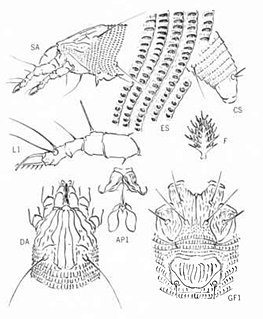 W
WThe eriophyid coconut mite, Aceria guerreronis, is a mite which infests coconut plantations. It is economically devastating, and can destroy up to 60% of coconut production. The immature nuts are infested and injured by mites feeding in the portion covered by the perianth of the immature nut.
 W
WCadjan are woven mats made from coconut palm leaves, used for roofing and walls. Cadjan houses were available in many Asian countries in past, but with development these houses are now limited to very rural areas in India, Sri Lanka and a few other Asian countries.
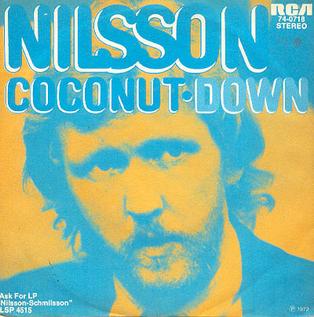 W
W"Coconut" is a novelty song written and first recorded by American singer-songwriter Harry Nilsson, released as the third single from his 1971 album, Nilsson Schmilsson. It was on the U.S. Billboard charts for 14 weeks, reaching #8, and was ranked by Billboard as the #66 song for 1972. It charted minorly in the UK, reaching #42. "Coconut" did best in Canada, where it peaked at #5. It was later featured in the films Reservoir Dogs, Practical Magic, and The Addams Family also Hey Arnold!: The Movie.
 W
WThe Coconut Palace, also known as Tahanang Pilipino, is a government building located in the Cultural Center of the Philippines Complex, in Pasay, Philippines. It was the official residence and the principal workplace of the Vice President of the Philippines during the term of Jejomar Binay.
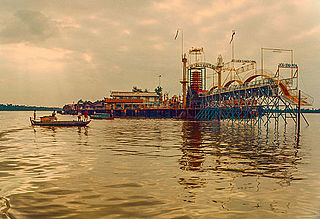 W
WThe Coconut Religion is a Vietnamese religious sect centered in southern Vietnam's Bến Tre Province. Founded in 1963, adherents created a "Coconut Kingdom" on an islet of the Mekong River. The religion is largely based on Buddhist and Christian beliefs, alongside the pacifism teachings of founder Nguyễn Thành Nam. The religion was abolished by the communist authorities after 1975. At its peak, the religion had some 4,000 followers. After the founder’s death following a clash with the authority in 1990, the cult is now still practiced by a very small minority.
 W
WCoconut timber is a hardwood-substitute from coconut palm trees. It is referred to in the Philippines as coconut lumber, or coco lumber, and elsewhere additionally as cocowood or red palm It is a new timber resource that comes from plantation crops and offers an alternative to rainforest timber.
 W
WThe coconut tree is a member of the palm tree family (Arecaceae) and the only living species of the genus Cocos. The term "coconut" can refer to the whole coconut palm, the seed, or the fruit, which botanically is a drupe, not a nut. The name comes from the old Portuguese and Spanish word coco, meaning 'head' or 'skull' after the three indentations on the coconut shell that resemble facial features. They are ubiquitous in coastal tropical regions, and are a cultural icon of the tropics.
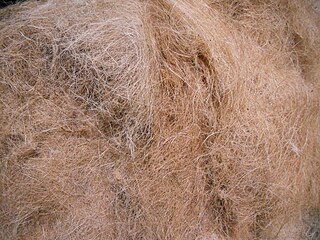 W
WCoir, or coconut fibre, is a natural fibre extracted from the outer husk of coconut and used in products such as floor mats, doormats, brushes and mattresses. Coir is the fibrous material found between the hard, internal shell and the outer coat of a coconut. Other uses of brown coir are in upholstery padding, sacking and horticulture. White coir, harvested from unripe coconuts, is used for making finer brushes, string, rope and fishing nets. It has the advantage of not sinking, so can be used in long lengths on deep water without the added weight dragging down boats and buoys.
 W
WCopra is the dried meat or kernel of the coconut, which is the fruit of the coconut palm. Coconut oil is extracted from copra, making it an important agricultural commodity for many coconut-producing countries. It also yields de-fatted coconut cake after oil extraction, which is mainly used as feed for livestock.
 W
WCoconuts falling from their tree and striking individuals can cause serious injury to the back, neck, shoulders and head; and are occasionally fatal.
 W
WHainuwele, "The Coconut Girl", is a figure from the Wemale and Alune folklore of the island of Seram in the Maluku Islands, Indonesia. Her story is an origin myth.
 W
WKing coconut is a variety of coconut, native to Sri Lanka where it is known as Thambili (Sinhalaතැඹිලි). Sweeter than regular coconuts, there are several sub varieties of the king coconut-the most common being the "red dwarf". The other variety is "Ran Thambili", a smaller variety containing about forty nuts in a bunch. The king coconut tree is shorter than coconut trees, and are found commonly growing wild in many areas of the country.
 W
WKokosbrood [Dutch] literally Coconut Bread, is a sandwich topping made of coconut meat which is dried, shredded, and pressed into a loaf mould. Wheat starch and glucose are added to the coconut mix and the loaf. Now sold in pre-sliced packets, traditionally local corner stores would sell slices cut to order from the whole loaf.
 W
WMacapuno, kopyor or coconut sport is a naturally occurring coconut cultivar which has an abnormal development of the endosperm. The result of this abnormal development is a soft translucent jelly-like flesh that fills almost the entire central cavity of coconut seeds, with little to no coconut water. Macapuno was first described scientifically from wild specimens in 1931 by Edwin Copeland. They were first cultivated commercially in the Philippines after the development of the "embryo rescue" in vitro culture technology in the 1960s by Emerita V. De Guzman. It has become an important crop in coconut-producing countries and is now widely used in the cuisines of Southeast Asia, South Asia, and the Pacific Islands.
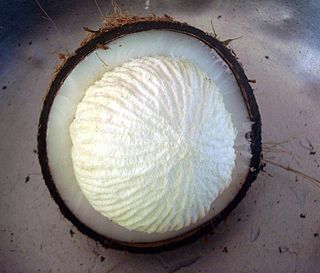 W
WSprouted coconuts or coconut sprouts are the edible spherical sponge-like cotyledons of germinating coconuts. They have a crunchy watery texture with a slight sweetness. They are eaten in coconut-growing countries either as it is or as part of various dishes. They are not commercially produced. They are also known variously as coconut pearl, coconut "embryo", coconut apple, or coconut cotyledon in English.